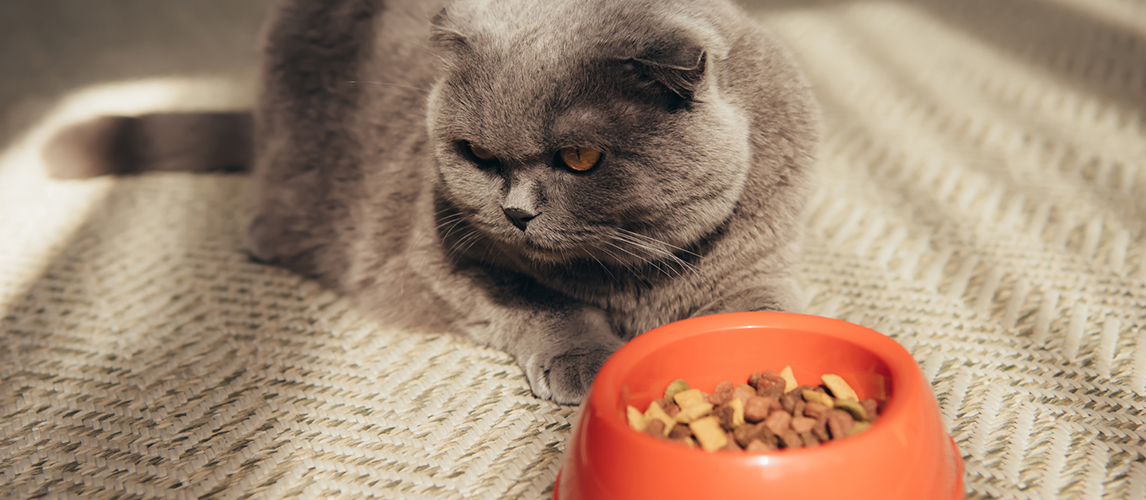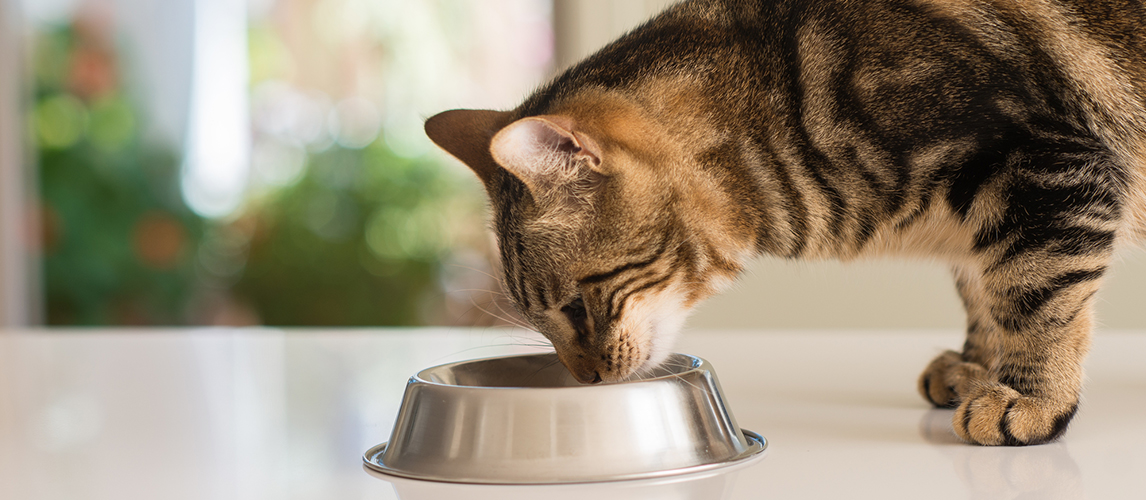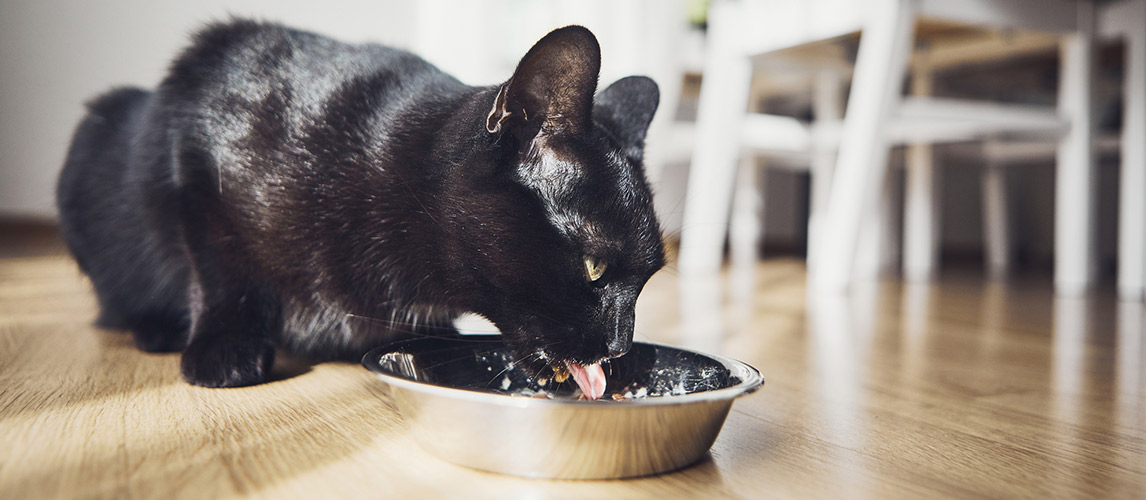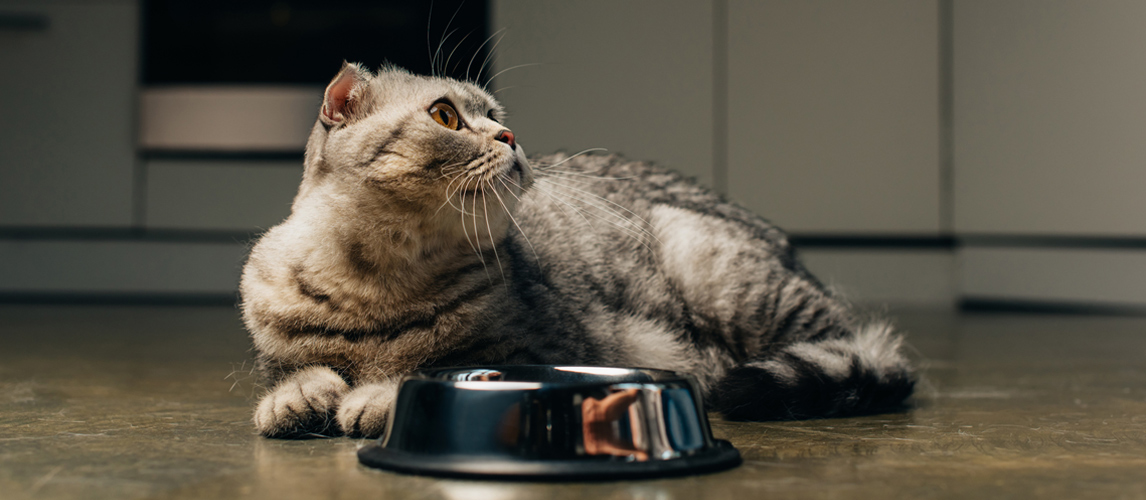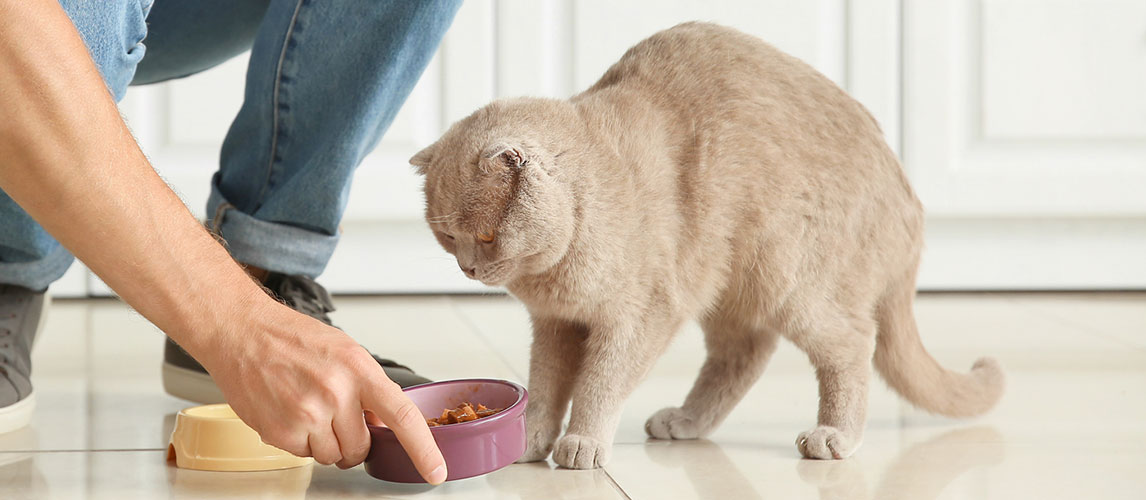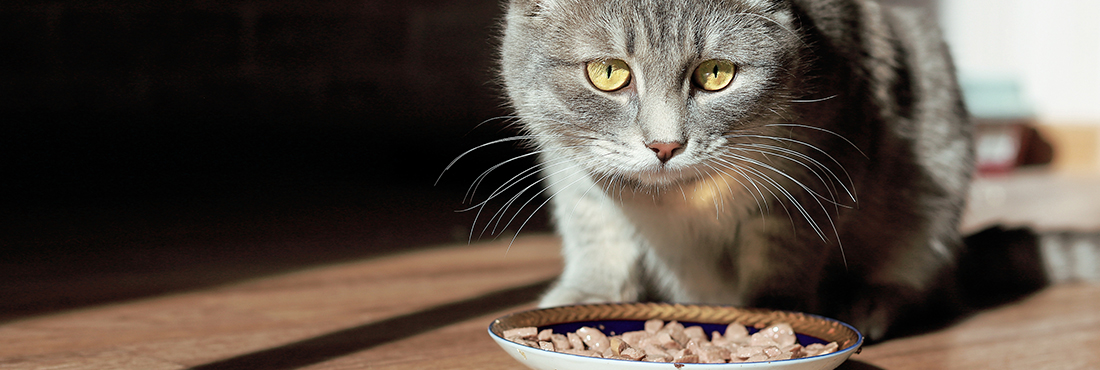
It is no secret that cats are very fussy eaters. One day a particular food item can be their all-time favorite; the following day is an entirely different story. But more than the occasional fussiness, any sign of change in your cat’s usual feeding habits should already alert you to the possibility of a sensitive stomach especially if your kitty is regurgitating, vomiting, or passing loose stools more frequently than usual.
The point is that you should be ready to start feeding your kitty with gentler and tummy-friendlier yet equally nutritious cat food. And you can start with our selection of the best cat food for a sensitive stomach.
10 Best Cat Foods for Sensitive Stomach
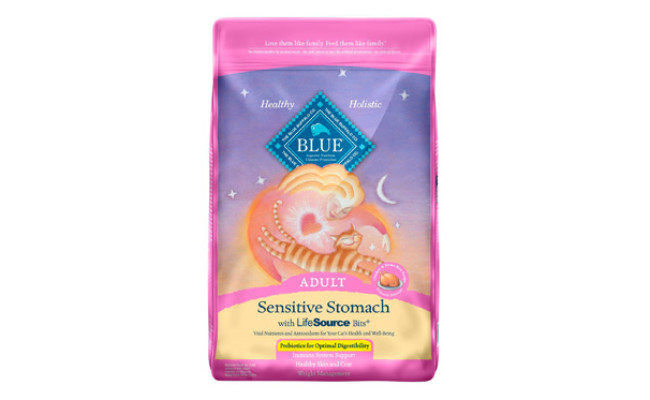
Blue Buffalo’s Healthy Holistic Sensitive Stomach formulation for adult cats is one of the most trusted cat foods by kitty lovers everywhere. One of the best aspects of the Blue Sensitive Stomach is that it is enriched with both prebiotics and probiotics to really improve the overall functioning of your cat’s digestive system.
One can also find comfort in the fact that it doesn’t contain gluten, although science has already established the fact that gluten allergies are quite rare in cats. Nevertheless, the combination of vitamins, minerals, phytochemicals, and antioxidants in easily digestible forms should help ease a hypersensitive feline tummy. Blue Buffalo Sensitive Stomach Chicken Recipe is one of 9 cat food recipes included in our Blue Buffalo Cat Food Review.
Real chicken as its first and principal ingredient
Enriched with wholesome grains, fruits, and veggies
Comes with menhaden fish meal for DHA and EPA
Contains 4 strains of probiotic organisms
With FOS prebiotics for better digestive health
- Brand: Blue Buffalo
- Model: 601
- Weight: 15 pounds
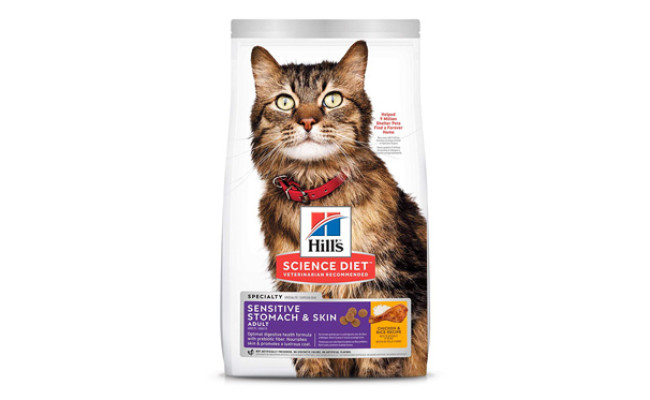
One can always rely on Hill’s Science Diet to provide your kitty with well-balanced nutrition that is highly specific for its current health condition. Such is the case for its Sensitive Stomach and Skin Dry Cat Food formulation. The name itself already gives you an idea of what it brings to the fore. For firm believers of grain- and gluten- free pet foods, however, this is not for you.
Nonetheless, HSD’s Sensitive Stomach and Skin comes with a unique formulation made of easily digestible ingredients while also minimizing the incidence of flare-ups in both the integumentary and digestive systems of your pet kitty. Its principal ingredient is brown rice, eliminating chicken in the process, and providing for a less allergenic formulation. Not to worry though as it also comes with eggs to supply the much-needed proteins by your cat.
Read in-depth Hill’s Cat Food Review.
Made of easily-digestible ingredients with brown rice as its principal ingredient
Excellent balance of nutrients from tummy-friendly ingredients
Enriched with vitamins and minerals
- Brand: Hill’s Science Diet
- Model: 8878
- Weight: 15.5 pounds
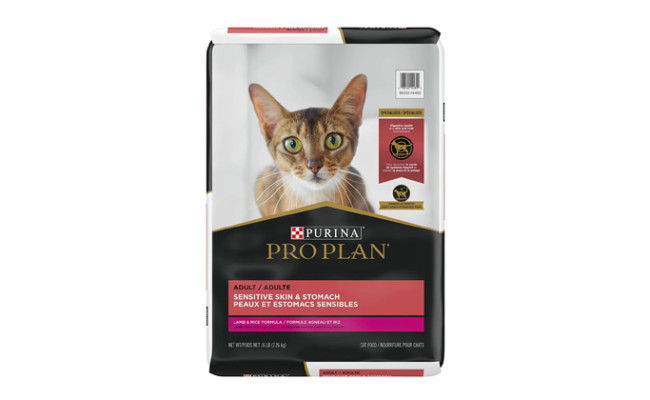
Purina’s take on what constitutes a tummy-friendly cat food is one that contains premium quality, novel protein – one that is rarely eaten by cats but is digestible enough not to overburden the feline’s gut. That’s what the Pro Plan Focus Sensitive Skin and Stomach formulation is all about. Packed with 40% premium proteins that are sourced from real lamb and then blended with healthy oats and rice, the Pro Plan Focus Sensitive Skin and Stomach makes for a really easy-on-the-tummy cat food.
Purina is also thoughtful enough to include beneficial prebiotics in its formulation, although a lot of folks would agree that the company would have made the product even better if probiotics were added as well. Nevertheless, with such great balance in nutrition, easily digestible ingredients, and rich and novel animal protein source, this is one food your kitty will be meowing for.
For more information on the brand, check out our guide on Purina Pro Plan Cat Food.
Comprises of 40% protein
Contains easily digestible oatmeal and rice
Principal ingredient is real lamb
Enriched with natural prebiotic fibers
- Brand: Purina Pro Plan
- Model: 38100144829
- Weight: 16 pounds
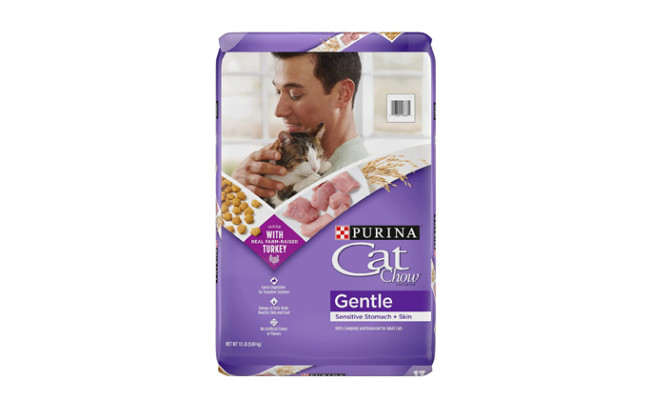
Purina’s strength in the formulation of high quality cat food lies in its understanding of the different needs of today’s felines. The Cat Chow Gentle Dry Cat Food from Purina is a testament to the company’s continued excellence in providing case-specific nutrition for felines. Instead of relying on traditional chicken for its animal protein source, the Cat Chow contains turkey. It does, however, contain gluten so if you’re wary about such an ingredient then you may have to look elsewhere. But if you can put your trust in the number of cat owners who are having exceptionally positive experience with the Cat Chow, then you know that this one’s for your kitty.
For a full list of our favorite options, see our round-up of Purina Cat Food Review.
Contains premium quality and easily digestible proteins
Enriched with a blend of natural fibers
Provides 25 essential minerals and vitamins
- Brand: Purina Cat Chow
- Model: 16633
- Weight: 13.25 pounds
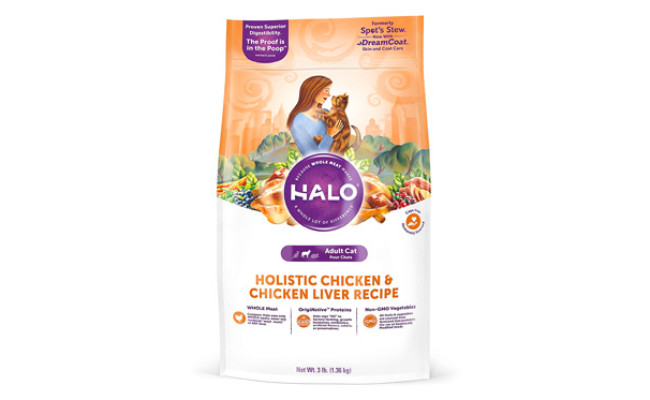
In the past, Spot’s Stew Natural Dry Cat Food was well-received by cat-lovers everywhere. Unfortunately, when Halo decided to give it a brand-new look complete with a reformulation of its time-tested and cat-approved recipes, not everyone was clearly happy. A lot of the complaints lodged against the company nowadays stems from the new formulation of the Spot’s Stew, specifically how the once-loved food by cats is now the most hated by feline pets.
We have to be fair though that a good number of feline-lovers do think the new formulation works for their pets. Spot’s Stew comes with all-natural ingredients including animal sources of premium proteins. Our only lament is that the old formulation came with 4 strains of probiotics. This is clearly missing in the new recipe. Halo Holistic Chicken & Chicken Liver is one of 5 cat food recipes mentioned in our Halo Cat Food Review.
High-quality natural animal ingredients as principal source of proteins
Contains refined grains and premium proteins
Contains non-GMO veggies, fruits, and wholesome grains
- Brand: Halo
- Model: 34020
- Weight: 3 pounds
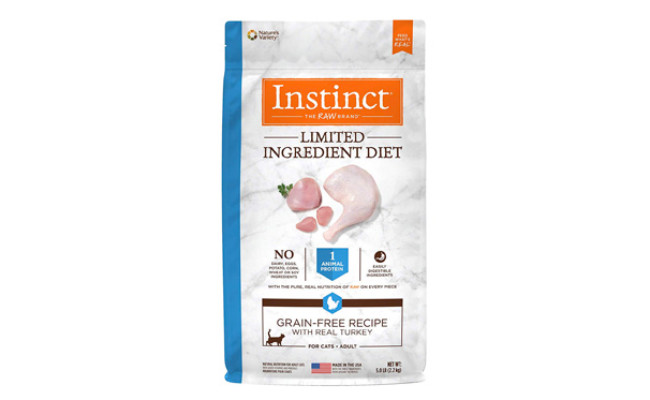
If you’re really concerned about upsetting your cat’s tummy even further, Nature’s Variety’s Instinct Limited Ingredient Diet Grain Free Recipe Natural Dry Cat Food is the perfect choice. Since it only contains one animal protein source and one vegetable ingredient, you can easily pinpoint which of these two ingredients will your kitty be sensitive to.
If your pet doesn’t show any sign of tummy sensitivity to either ingredient, then you can start adding ingredients until you’ve found the culprit to its overactive tummy. While it is true that it only has very limited ingredients, you can always count on Nature’s Variety to give your pet optimal amounts of nutrients it needs for other physiologic processes. Instinct Limited Ingredient Diet with Real Turkey is one of 5 recipes included in our review of the Nature’s Variety Instinct Cat Food product line.
Relatively short ingredient list with a single animal protein and vegetable ingredient
Enriched with healthy botanicals and prebiotics
Enriched with minerals and vitamins
- Brand: Instinct
- Model: 769949658733
- Weight: 5 pounds
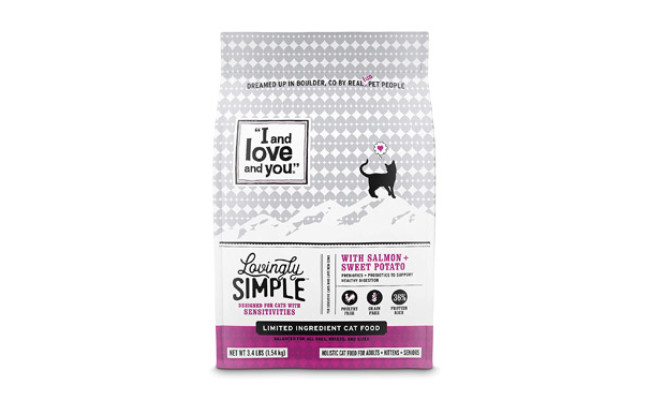
I and Love You have quickly become a popular brand with those looking for high-quality food for their cats at a good price. Each bag is made to suit specific requirements, and this Lovingly Simple option is ideal for cats with sensitive stomachs. Free from poultry, which can be a huge trigger for some cats, and made without any unnecessary fillers, this is a great choice for struggling kittens.
It’s designed to meet all the dietary requirements of any cat, at any age. As such, you can use this option for kittens, all the way through to senior cats. And, with salmon as the main ingredient, this product still provides brilliant nutrition for active cats. I and Love and You Lovingly Salmon & Sweet Potato is one of 5 cat food recipes mentioned in our I and Love and You Cat Food Review.
Free from poultry
No unnecessary fillers
Uses salmon as the main ingredient and source of protein
Added omega 3 and 6 fatty acids for healthy brain function
Provides a complete, balanced diet for all life stages
- Brand: I and Love You
- Model: F15071
- Weight: 3.4 Pounds
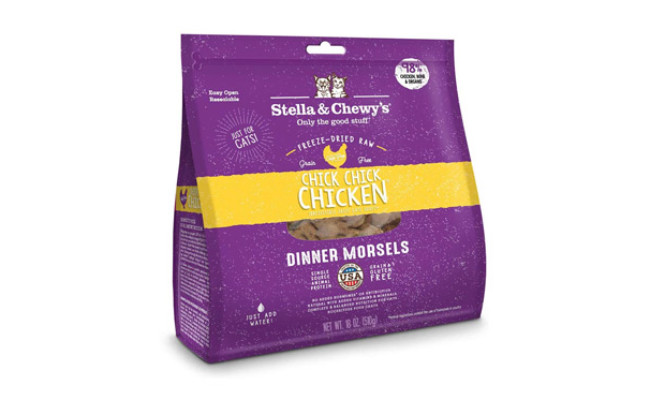
Stella and Chewy’s always receive high ratings from customers and for good reason. They come with a great ingredients list that offers a good quality guaranteed analysis, which provides plenty of nutrition to cats. While this option isn’t suitable for cats who are sensitive to poultry, it’s a great choice for those who are sensitive to fillers.
Free from any grains, gluten, fillers, artificial preservatives, or colorings, this cat food offers some of the best nutrition on the market. With 98% of the ingredients list making up fresh animal, it’s sure to appeal to your cat’s carnivorous nature. Finally, everything is freeze-dried, to better lock in all those good, natural nutrients.
Freeze-dried raw cat food
Designed to lock in nutritional content from the get-go
To be used on top of standard cat food or alone
Made with 98% meat, organs and bone
No artificial nasties
- Brand: Stella & Chewy’s
- Model: CAT-FDC-18
- Weight: 1.13 Pounds
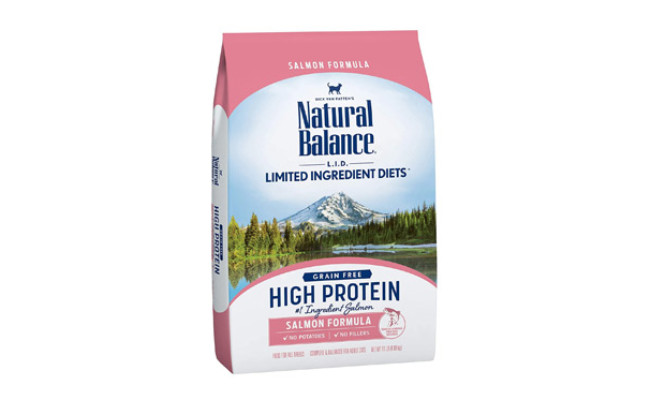
We’re a huge lover of Natural Balance, and we have found that many a cat’s need has been met through this company. Never is this more true than with Natural Balance’s Limited Ingredient Diets range. Free from grains, fillers and artificial ingredients, this is a great choice for cats with sensitive stomachs, and comes at a great price, too.
Designed for adults, this option uses salmon as the main ingredient – making it the ideal food for those cats who are allergic to poultry. It also comes with a range of added vitamins and minerals, to keep your cat looking and feeling healthy and happy.
You may also like our review of Natural Balance Cat Food.
No added grains, potatoes, fillers, flavors or artificial colors
Limited ingredients are softer on the stomach
Made with salmon as the number 1 ingredient
Offers a balanced diet for adult cats
Plant-based additional ingredients to meet a wide range of nutritional needs
- Brand: Natural Balance
- Model: 2363349317
- Weight: 11 Pounds
Best Cat Food for Sensitive Stomach Buying Guide
It is understandable why some folks can get really upset if they see their pets showing signs of sensitive stomachs that the first natural reaction is to change their cat food. However, even before you pick the next available product on the store shelf, you might want to read our cat food for sensitive stomach buying guide first to give you a heads-up on what to expect in the market.
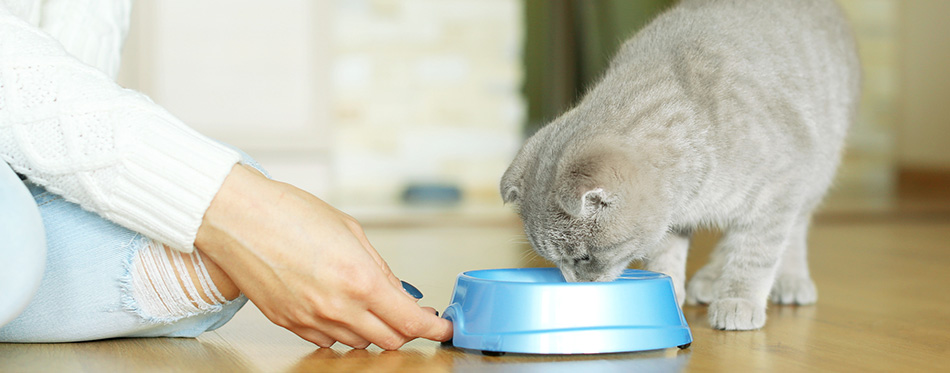
How Can You Tell If Your Cat Has a Sensitive Stomach?
The term ‘sensitive stomach’ is a rather vague description of what is actually occurring in an organism’s tummy. We had to use the word ‘organism’ loosely here to mean every living organism that has a digestive system. Defining ‘sensitive’ requires an appreciation of what can be considered normal. One can only identify the presence of a certain ‘sensitivity’ if there is a deviation from what can be rightfully considered as ‘normal.
As such let us try to follow the journey of a feline dry kibble. From the mouth, the kibble is broken down into smaller bits so that it can be passed through the narrow tube known as the esophagus. From here, the smaller bits of kibble enter the stomach where they undergo further breakdown into even smaller, finer bits. This is made possible by the gastric acids in the cat’s stomach. From there, the now-finely broken down kibble is moved towards the duodenum, the first part of the small intestines. Here, secretions from the pancreas, gall bladder, and liver all mix with intestinal enzymes to further process these very fine molecules of kibbles releasing glucose, amino acids, and fatty acids from the kibble. These macronutrients are what is absorbed by the blood vessels that line the small intestines. Other substances are also absorbed by the blood. This absorption continues well into the large intestines or the colon where eventually stool is formed. Stool collects and gets ready to be ejected from the rectum and anus.
When we talk about cats having sensitive stomachs, we know that the main problem is in the stomach itself. However, the manifestations or signs and symptoms can actually occur anywhere along this tract that we have just discussed. For example, a classic sign of a sensitive stomach is vomiting. This occurs because of the forceful expulsion of the contents of the stomach, but the manifestation is in the mouth.
The same is true with regurgitation, another common sign of stomach sensitivity. This occurs because of the improper closure of the valve between the esophagus and the stomach. Even before the food reaches the stomach, forceful contractions in the esophagus already push the food outward through the mouth.
So how can you tell if your cat has a sensitive stomach? Let us just put it this way. If you notice something different in its feeding habits, then there’s a chance that it may be experiencing some form of stomach sensitivity.
But to give you a clearer picture, here are some of the more common signs that will indicate stomach sensitivity.
- Changes in appetite
- Constipation or diarrhea
- Vomiting or regurgitation
- Increased or decreased thirst
What Causes a Sensitive Stomach for a Cat?
There are many reasons why a cat’s tummy can suddenly work out of sync with the rest of the digestive tract. As we already mentioned, the main culprit can be found in the stomach, yet the manifestation can be somewhere else. Regardless, here are some of the more common causes of feline-sensitive stomachs.
- Food allergies
Certain cats have dysfunctional or hyper-reactive immune systems that even normal food molecules can be considered as an allergen. This is especially true for highly proteinaceous foods like beef, chicken, and pork. If this is the case, you should also understand that other manifestations of allergies may accompany the signs and symptoms of stomach sensitivity.
- Food intolerances
This should not be confused with food allergies. In food allergies, stomach sensitivity is brought about by the activation of the immune system in the perceived presence of a protein allergen. In food intolerance, the food molecule is not digested properly such that it is not absorbed into the bloodstream. This leads to its passing through the gut and out of the anus in almost-unchanged form.
- Organic disease and intestinal parasitism
Diseases of the liver, pancreas, and gallbladder can lead to the improper digestion of food molecules resulting in stomach upsets. It is also possible that intestinal parasites can block the efficient absorption of nutrients and water from the gut resulting in the rapid ejection of watery stools.
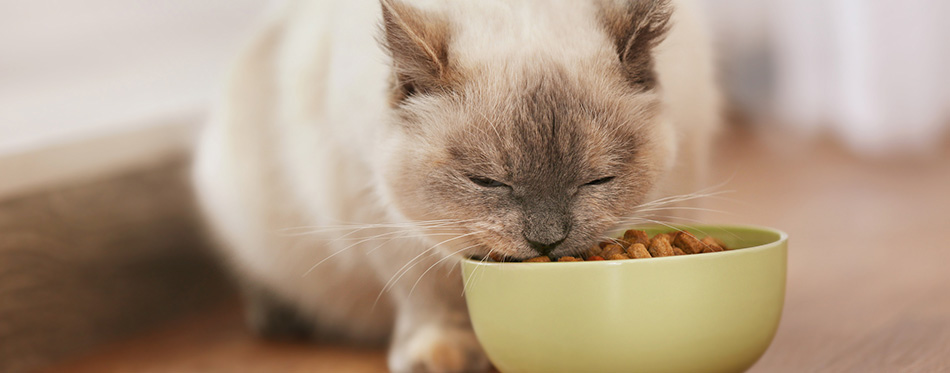
- Feline hairball
Cats are known for their meticulous grooming behavior. Sadly, if the kitty happens to shed a lot, then the risk of hairball development is also increased. This hairball can change the way the stomach digests the food that is passed down from the esophagus. To reestablish normal functioning, the cat’s stomach will attempt to either pass the hairball down through the gut or upwards through the mouth. In most cases, regurgitation is easier.
Check out our guide on the Best Cat Food for Hairballs.
- Feline feeding behavior
Feline pets have the tendency to eat almost anything that ‘moves’ outdoors owing to their predatory instincts. This can also cause stomach sensitivity.
- Change in diet
A sudden shift in a cat’s diet can also lead to stomach sensitivity. This is especially true among kittens since their stomachs are still pretty much adjusting to the kind of diet that they were born to. Suddenly replacing this with a new one is like shocking their tummies into making the adjustment right away.
You may also like our review of Hypoallergenic Cat Food.
Worst Foods for Cats with Sensitive Stomachs
If you analyze carefully what we have been talking about in the preceding section, it is quite easy to pinpoint the kinds of foods that you should never give to a kitty that has a sensitive stomach. Here are some of the worst foods you can ever give to a cat that has issues taming its tummy.
- Dairy products
The lactose found in dairy products such as pasteurized cow’s milk, cream, and even cheese cannot be digested properly by cats. While it is true that kittens require milk, this can only be provided by their respective mommy cats since these have the right kind of lactose that is easily digested by the kitten’s tummy. The same is true with milk replacements. Their formulation closely mimics a mommy cat’s natural milk.
To find out what is the best kitten food head over to our buying guide for support and recommendations.
- Beef
It is generally not known why some cats’ tummies are not really keen on beef, but the observation is that there are certain cats that experience diarrhea after consuming beef.
- Fat trimmings
Too much fat in a cat’s diet can also lead to stomach sensitivity because of the unusually large quantities of bile needed to emulsify the fat in preparation for digestion. If there is not enough bile, then undigested fat can be easily passed down as diarrhea. In other cases, these can be vomited out.
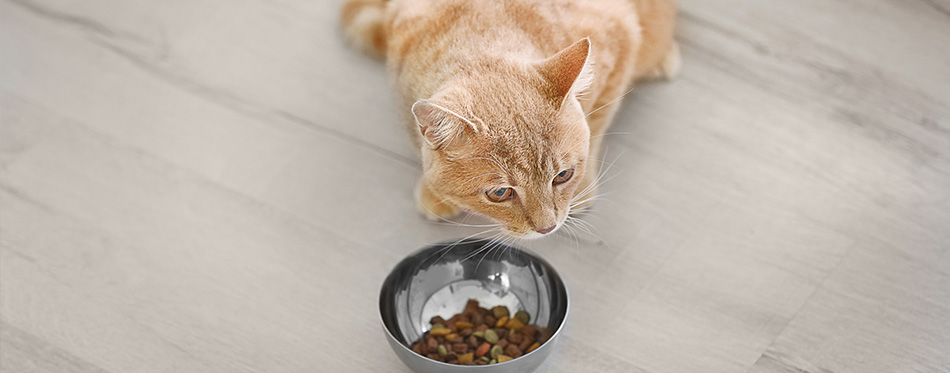
- Grains
Remember what we said about cats being obligate carnivores? The answer is right there. Their digestive tract is simply not designed to munch and absorb grains for the simple fact that these take a significantly longer length of time to process.
You may also like our detailed review of Grain Free Cat Food.
- Cat food with too many additives
The problem with some commercially prepared cat food is that there are way too many additives that it becomes very difficult to pinpoint which is causing sensitivity in your cat’s tummy. Remember, many of these additives are synthetic and as such may not sit well with your kitty’s tummy.
Cats deserve the best nutrition for them to grow and live healthily. While having sensitive stomachs can be a great concern, giving them the right cat food for sensitive stomachs can help you reestablish normalcy in your feline friend’s tummy until such time that your vet has identified the culprit and designed a much safer diet for your kitty.
Check out our guide on Cat Food for Bengals.
Sources:
- Sheldon Rubin, How to Treat a Cat That has Diarrhea, HowStuffWorks
- Bill Saxon DVM, Gastroenteritis in Cats, Pet Health Network
A freelance writer and word nerd, Wendy is a content writer with a knack for getting into the nitty-gritty of pet ownership. For the past three years, she’s been researching and writing a huge range of different topics – but always comes back to her beloved pet articles. Lover of all things four-legged and owner of Harley, Pepper and Rush, Wendy is currently completing her MNSW at Edge Hill University.
